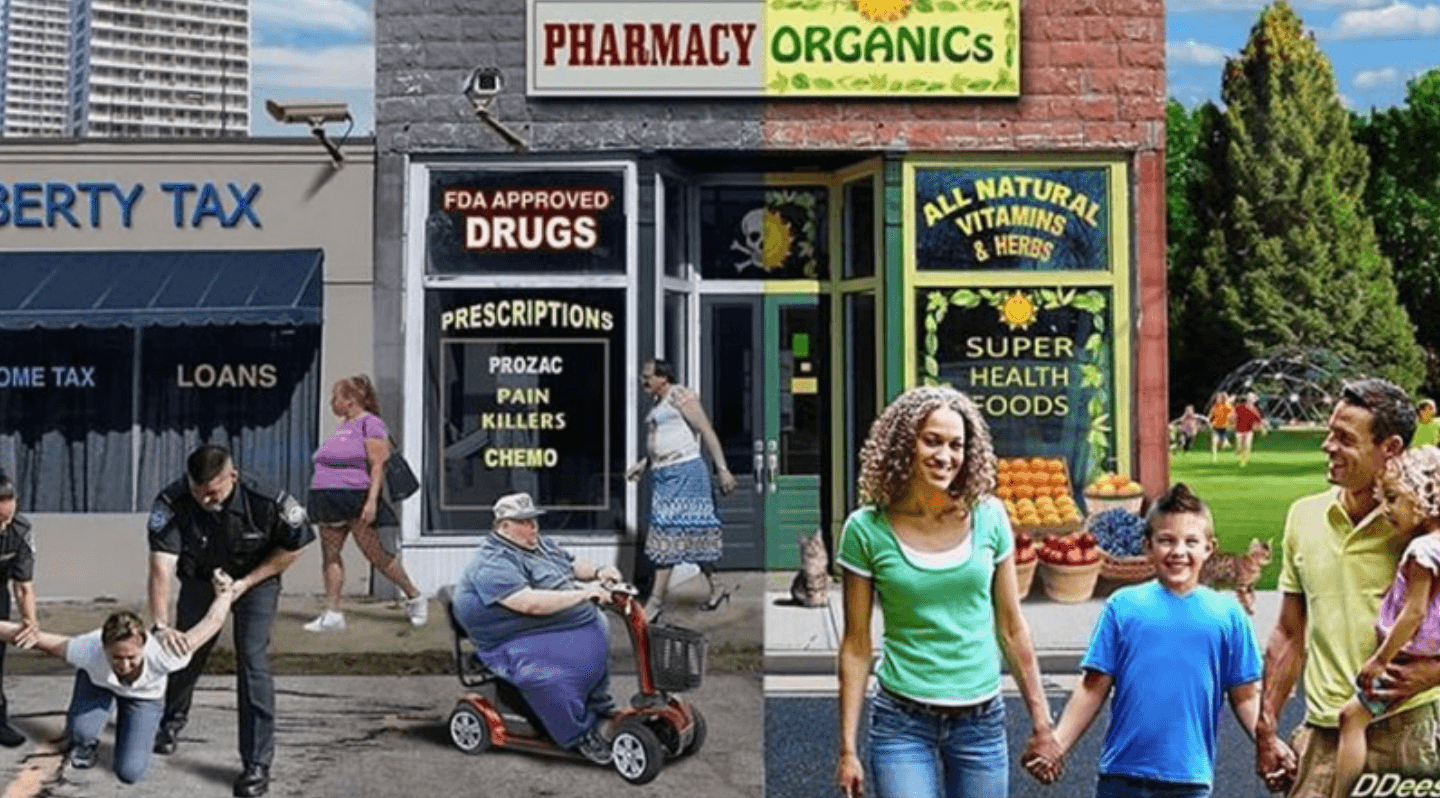“We need to invest in life, rather than expensive infrastructure investments,” Anne van Leeuwen, a founding farmer from the European Alliance for Regenerative Agriculture, pleaded from the audience during the Regenerative Food Systems investment summit Brussels in February. “We should focus on soil, compost, seeds, animals, and people.”
I endured Brussel’s freezing weather (and missed out on the magical Latin American Impact Investing Forum) in order to learn from regenerative agricultural investors.
Why? Because I believe agriculture and food systems are not sectors. Rather they are everyone’s life-axis and are at the core of our economic system’s relationship with people, social justice and ecosystems.
The last three ag-tech deals that I’ve witnessed from Latin America left me feeling very uncomfortable. They were being marketed under the pretense of “impact investing,” while serving big banks or big corporate interests, selling more toxic agrochemicals and perpetuating degenerative outcomes for both biodiversity and small holder farmers. They were increasingly indebting farmers, increasing corporate control and accumulating massive amounts of land in the hands of the few.
For anyone that thinks that agriculture equals impact, there’s a more nuanced version. The relationship between the two can be managed in several ways (here’s a more nuanced version of the Regenerative Agriculture Continuum, by Ethan Soloviev):
Extractively, by exploiting natural and social capital, concentrating power, working against biodiversity.
Sustainably, by neutralizing damages, aiming for “less harm”; or,
Regeneratively, by restoring ecosystems, enabling biodiversity to thrive, building partnerships and centering social justice and wealth creation and distribution for all stakeholders involved.
In the pursuit of impact investing, it is crucial to distinguish between extractive, sustainable, and regenerative approaches to agriculture.
Sacrifice zones
While ag-tech may offer efficiency gains, it often neglects the cultural and ecological dimensions of farming favoring corporate interests over the well-being of smallholder farmers and the environment. True impact lies in regenerative practices that restore ecosystems, promote biodiversity, and empower local communities.
Tech-centricity. The omnipresent cognitive dissonance imperative in climate-tech and ag-tech investment narratives: “Tech got us into this mess – industrialization, ecocide, overproduction, overconsumption, plastic pollution, digitalizing usury, planned obsolescence, processed food, weapons of mass destruction, discardable stuff, poisoning our food, water and air, endless resource extraction and mining – and tech will save us!”
This paradigm comes from the anthropocentric domination dynamic of humans wanting to prove we can somehow “outsmart nature.” An example: “This human-lab-made protein is better than nature’s and will save us from the climate crisis.”
Techno-optimism. This attitude dominates the climate finance global party. Rainforests and their stewards remain substantially undervalued against the word of any chief technology officer. Don’t get me wrong, we are not against tech itself but it is fundamentally different to be tech-enabled than tech-centric. Tech should be a temporary means and never an end in itself.
Rarely, if ever, are planetary boundaries or the biosphere’s limits to technological growth acknowledged. The contradiction of needing ever more gadgets and minerals for so called “climate-tech- solutions” is one of the biggest blindspots.
Our current economic system has already transgressed six out of nine planetary boundaries. We are reaching all of the biosphere’s limits.
Material and thus mineral degrowth is not an option. Rather it is a fact we must act on to transform our economic systems and its underlying paradigms. This shift should reframe radically our increasing appetite/addiction to tech-gadgets.
Emerging climate technologies require increasing amounts of mining rare metals. Regions of the global South which have become the defacto “sacrifice zones,” like the Democratic Republic of Congo that is powering tech’s cobalt addiction.
Regenerative practices
We need a paradigm shift towards ecological intelligence – EI – over artificial intelligence, or AI.
The debate surrounding climate-tech and ag-tech investments revolves around the tension between efficiency-driven technological solutions and the more nuanced, context-specific approaches that prioritize ecological and social well-being.
Ag-tech promises to revolutionize agriculture through data-driven precision. But it often comes at the expense of affordability and cultural and ecological integrity, by treating farms as standard machines in need of optimization and farmers as disposable.
True impact in the agricultural sector lies not in furthering corporate control and perpetuating unsustainable and expensive practices but in embracing regenerative approaches that prioritize the well-being of smallholder farmers, who represent roughly 80% of global food supply, along with social justice and the ecological resilience of landscapes.
This entails shifting the focus from capital-intensive investments in high-tech solutions to investments in the fundamental elements that make ecosystems thrive and people come alive.
The good news is that while improving social and environmental impact, regenerative agriculture has proven to be very profitable as well when managed well in many geographies. According to BCG’s latest report based on global north data (U.S. + Germany) “once farmers reach a relatively steady state of regenerative practices, data indicates a positive long-term business case for farmers, resulting in between 70% and 120% higher profitability and a return on investment of 15% to 25% over 10 years.”
We’ve also seen this profitability potential in cases in Mexico, Ecuador, East Africa, and Argentina. At SVX, we have been part of a partnership called NAR for mapping Latin American Regenerative food businesses in this Website with Fundación Avina funded by IDRC: https://regenerativo.org/.
Too many impact investors are funneling investments into planet-consuming tech. It’s time to challenge the pervasive belief in technology as the ultimate savior, acknowledging its role in environmental degradation. The path to prosperity lies not in artificial constructs but in co-creating ecologically with living systems wisdom.
Let’s not overlook the perfect climate technology already available to us: nature itself. The synergy of natural systems, from photosynthesis to ecosystem dynamics, offers unparalleled and real solutions. Yet, investment valuations often fail to recognize the inherent value of natural capital, prioritizing venture capital profit over genuine impact.
It’s time to reassess our investment priorities. Instead of pouring funds into tech-driven ventures, we must allocate resources to nature and communities stewarding ecosystems. True impact lies in regenerative practices that restore ecosystems, promote biodiversity, and empower local communities.
Let’s break free from the techno-optimism that dominates the investment landscape, recognize the limits of technological growth and acknowledge the environmental costs of our tech addiction. Impact investing should not be about efficient short sighted symptomatic solutions; but rather about cultural and ecological, systemic transformations to achieve long lasting collective abundance.
Conserving diversity
Embracing this alternative vision requires navigating a myriad of challenges and complexities. There is a risk of inadvertently perpetuating neo-colonial conservation schemes that prioritize Western ideals over indigenous knowledge and local needs. Moreover, the concentration of land ownership in the name of sustainability threatens to exacerbate existing inequalities and undermine the very communities sustainable finance should aim to support.
This year could mark a turning point where natural capital becomes a mainstream asset class, signaling a shift towards more holistic investment strategies.
Some of the investors and funds that are really practicing this nature-based approach include Eco Enterprises Fund, Ceniarth, Reciprocity Fund, Mad Agriculture’s Perennial Fund, CI Ventures, URAPI, The Nest, Grounded Investment Company, Althelia (bought by Mirova), and more.
We are learning from them to build Regenera Ventures Fund by SVX Mexico to invest in the rural transition towards regenerative management. Regenera Ventures Fund emerged from Sustainable Landscapes Ventures, a partnership funded by USAID, and implemented by Conservation International in alliance with other strategic partners for technical assistance like Minkadev and El Buen Socio.
Let’s manifest the words of Vandana Shiva, the founder of Navdanya, a movement for biodiversity conservation and farmers’ rights in India. “The primary threat to nature and people today comes from centralizing and monopolizing power and control. Not until diversity is made the logic of production will there be a chance for sustainability, justice and peace.
“Cultivating and conserving diversity is no luxury in our times: it is a survival imperative.”
| Techno-centric | Life-centric | |
| Aspiration | Goal: To be a unicorn. Prioritizing the use of current tools: Fake or artificial intelligence, fake food, fake rain, etc. Humans as engineers; farms as production machines. Lab-processed food. | Goal: To be a profitable, place-based, contextualized source of abundance. Ecological Intelligence = real nourishment, humans as architects of abundance. Living-systems thinking, being and doing. |
| Economic model | Ever-increasing amounts of materials, mineral extraction and energy needed to support this system and lifestyles. Degenerative by design to natural and social capital. | The wisdom of “enoughness,” balance, less materials and energy needed. Less fake (over-processed) consumption. Building lasting prosperity for human communities aligned with thriving ecosystems. |
| Where is the highest allocation of value in the investment? | Chief Technology Officers, + CAPEX: gadgets, instruments, tools, infrastructure, tech-centric “intellectual property.” | Community relationships, local value webs, long term trust building, land stewards, biodiversity, revitalizing ecosystem services, indigenous wisdom, reconnecting water cycles. |
| Timelines for objectives | Quarterly. | Intergenerational. |
| Transactional motivation | Originated from fear/mistrust. | Originated from long term trust and reciprocity. |
| Wealth Creation | Accumulative at the top. | Distributive by design. |
| How are Investment terms defined? | Top-down approach. | Co-created with all stakeholders including ecosystems. |
| Dynamic | Extraction, domination. | Interdependence, reciprocity. |
| Investment behavior | Deep J-Curve (valley of death),due to huge capex needs, product market fit + marketing costs. | Shallow J-Curve (valley of hope), due to real economy production linked to food systems and most essential needs. |
| Recurrent clients/ Affordability | Big corporations that can afford it. | Global communities, smallholder farmers, companies of all sizes. |
Join regenerative investors for the webinar, “Sustainable Landscapes Ventures Blended Finance Results & Regenera Ventures Fund” on Friday, April 19th at 9:30 a.m. Mexico Time. Register here.
Laura Ortiz Montemayor is the chief purpose officer at SVX Mexico and a general partner at Regenera Ventures Fund.











